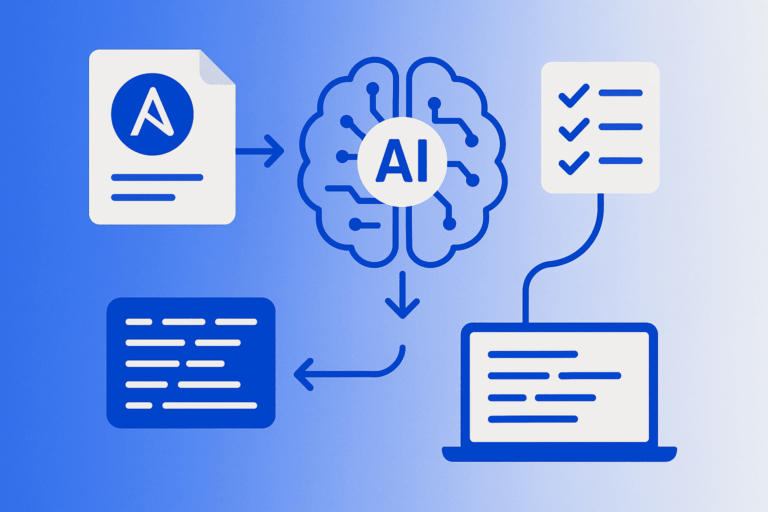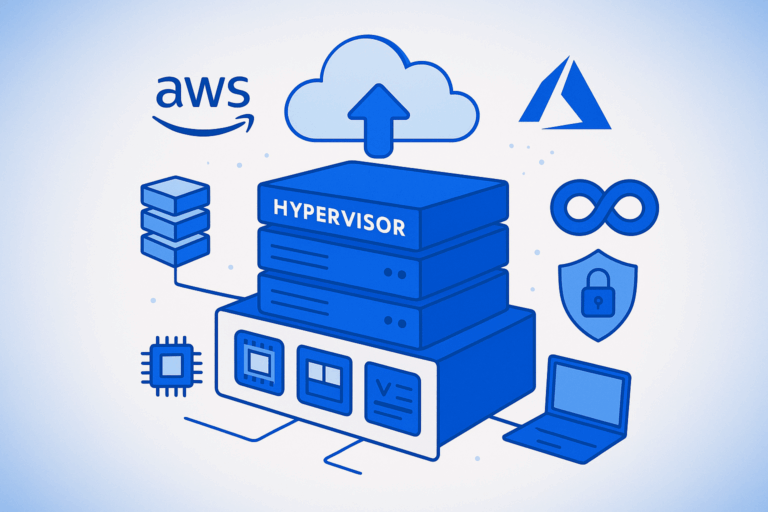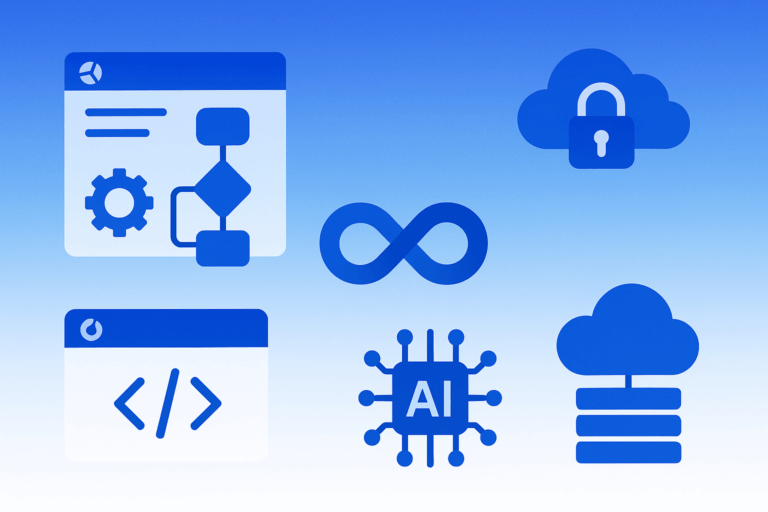How Cloud-Based Tools Are Revolutionizing Creative Industries

The Digital Renaissance🎨
Picture this: A graphic designer in Delhi collaborates with a music producer in Los Angeles while a content writer in London adds copy—all working simultaneously on the same project. This isn’t science fiction; it’s the digital creative revolution happening right now through cloud technology.
The modern creative landscape has fundamentally shifted from isolated desktop applications to interconnected cloud-based ecosystems that democratize creativity and enable global collaboration. Whether you’re a DevOps engineer managing creative pipelines, an IT professional supporting creative teams, or a cloud business looking to understand the creative economy, this transformation impacts everyone in our digital ecosystem.
The Cloud Canvas Revolution: Where Creativity Meets Technology 🚀

Adobe Creative Cloud: The Enterprise Standard
Adobe Creative Cloud has evolved beyond simple creative software into a comprehensive cloud technology platform that serves over 300 million users globally. The 2025 iteration includes AI-powered features through Adobe Firefly, transforming how designers, marketers, and content creators approach their craft.
Key enterprise applications include:
- Marketing content creation (banners, brochures, social media assets)
- Collaborative design workflows with real-time sharing
- Automated asset management through Creative Cloud Libraries
- Cross-platform synchronization across desktop, web, and mobile
The integration of artificial intelligence has reduced content creation time by up to 55%, particularly in fraud detection and quality assurance workflows—principles that extend beyond creative applications into cybersecurity and automation sectors.
Figma: Redefining Collaborative Design
Figma’s multiplayer design environment represents a paradigm shift in how creative teams operate. Unlike traditional design tools, Figma’s cloud-native architecture enables:
| Feature | Traditional Tools | Cloud-Based Figma |
|---|---|---|
| Collaboration | File sharing via email | Real-time multiplayer editing |
| Version Control | Manual file management | Automatic version history |
| Developer Handoff | Static mockups | Interactive prototypes with code specs |
| Platform Access | Desktop-only | Cross-platform browser-based |
This DevOps-inspired approach to design has influenced how software development companies structure their creative workflows, bringing agile methodologies into the design process.
The Psychology Behind Skill-Sharing Success: A Developer’s Perspective 🧠
Duolingo’s Growth Engineering Masterclass
Duolingo’s exponential growth—from 5 million to nearly 30 million daily active users—demonstrates how AI-driven personalization and gamification strategies create habit-forming products. The platform’s success stems from applying software engineering principles to learning psychology.
Key Developer Insights from Duolingo’s Architecture:
- Machine learning algorithms analyze user struggle points and adapt content difficulty
- Real-time feedback loops provide immediate validation (similar to automated testing in DevOps)
- Progressive disclosure prevents cognitive overload (a principle borrowed from UI/UX design)
- Social competition mechanisms drive engagement through leaderboards and streaks
The Duolingo English Test, powered by cloud infrastructure, processes over 2 million test-takers annually, demonstrating scalable automation in assessment.
Yousician: Gamifying Music Education Through Cloud Technology
Yousician’s approach to music education showcases how cloud-based platforms can transform traditional skill acquisition. The app’s real-time audio processing capabilities—analyzing rhythm, pitch, and timing through device microphones—represent sophisticated AI implementation typically found in enterprise applications.
Technical Architecture Highlights:
- Edge computing for low-latency audio feedback
- Cloud storage for progress synchronization across devices
- Machine learning models for personalized learning paths
- Microservices architecture supporting millions of concurrent users
This mirrors enterprise cloud solutions where Azure Cloud and AWS Cloud provide similar scalability and real-time processing capabilities.
From Garage Band to Global Streaming: The Modern Creator Pipeline 🎵
The Digital Audio Workstation Revolution
Cloud-based DAWs like Soundtrap by Spotify, BandLab, and Audiotool have democratized music production. These platforms eliminate traditional barriers:
- No expensive hardware requirements
- Instant collaboration across geographical boundaries
- Automatic project backup through cloud storage
- Cross-platform compatibility (iOS, Android, web browsers)
GarageBand’s evolution from simple mobile app to professional tool demonstrates how accessibility-first design can capture massive market share. The platform now supports live streaming integration, enabling creators to broadcast directly to platforms like Spotify and Apple Music.
The Creator Economy Infrastructure
Modern creators rely on interconnected cloud services that mirror enterprise DevOps pipelines:
Content Creation → Cloud Processing → Distribution → Analytics → OptimizationThis workflow utilizes:
- Content management systems (similar to enterprise CMS)
- Automated transcoding for multiple format outputs
- CDN distribution (leveraging AWS CloudFront or Azure CDN)
- Real-time analytics for performance monitoring
Security Considerations in Creative Cloud Workflows 🔒
Cybersecurity remains paramount as creative industries increasingly rely on cloud technology. Recent studies show AI-driven security measures reduced fraud cases by 55% from 2022 to 2025. Key considerations include:
Enterprise Security Framework:
- Zero-trust architecture for creative asset access
- End-to-end encryption for collaborative projects
- Multi-factor authentication across all creative platforms
- Regular security audits of third-party integrations
DevOps engineers managing creative environments must implement Infrastructure as Code using tools like Terraform to ensure consistent security configurations across development, staging, and production environments.

Case Study: Remote Creative Team Architecture 📊
Scenario: Global advertising agency with teams across five continents managing real-time campaign creation.
Infrastructure Requirements:
- High-bandwidth connections for 4K video collaboration
- Low-latency communication tools for creative feedback
- Centralized asset management through cloud storage
- Version control systems adapted for creative workflows
Technical Implementation:
┌─────────────────┐ ┌──────────────────┐ ┌─────────────────┐
│ Design Team │────│ Cloud Platform │────│ Development │
│ (Figma/Adobe) │ │ (AWS/Azure) │ │ Team (Git) │
└─────────────────┘ └──────────────────┘ └─────────────────┘
│ │ │
└────────────────────────┼────────────────────────┘
│
┌──────────────────┐
│ Client Review │
│ Platform │
└──────────────────┘This architecture enables 24/7 creative production across time zones while maintaining quality control and project management standards.
How Devolity Optimizes Creative Cloud Workflows 🌟
Devolity’s expertise in cloud architecture and DevOps automation uniquely positions us to optimize creative workflows for enterprise clients. Our certified engineers (holding AWS and Azure certifications) have successfully implemented:
Key Achievements:
- 99.9% uptime for creative collaboration platforms
- 50% reduction in creative asset delivery times
- Enterprise-grade security implementations
- Scalable infrastructure supporting creative teams from 10 to 10,000+ users
Our experience with Terraform automation and CI/CD pipelines ensures creative tools integrate seamlessly with existing enterprise infrastructure while maintaining security compliance and cost optimization.
Practical Implementation Guide 🛠️
Setting Up Enterprise Creative Collaboration:
Phase 1: Infrastructure Assessment
- Evaluate current bandwidth requirements
- Assess security compliance needs
- Analyze user access patterns
- Plan disaster recovery protocols
Phase 2: Platform Integration
- Deploy cloud-based creative tools
- Configure single sign-on (SSO) integration
- Implement automated backup systems
- Establish monitoring and alerting
Phase 3: Team Onboarding
- Conduct security training sessions
- Create workflow documentation
- Establish collaboration protocols
- Monitor adoption metrics
Troubleshooting Common Creative Cloud Issues 🔧
Performance Optimization:
| Issue | Symptoms | Solution |
|---|---|---|
| Slow collaboration | Lag in real-time editing | Optimize network configuration |
| File sync errors | Missing project updates | Check firewall settings |
| Authentication failures | Unable to access shared projects | Verify SSO configuration |
| Storage limitations | Projects not saving | Scale cloud storage allocation |
Security Incident Response:
- Immediate isolation of affected accounts
- Audit trail analysis using cloud logging
- Password reset enforcement
- Security patch deployment across all systems
The Future of Creative Technology 🔮
The convergence of AI, cloud computing, and creative industries continues accelerating. Emerging trends include:
- Generative AI integration across all creative tools
- Blockchain-based creative asset management
- Edge computing for real-time creative collaboration
- Quantum computing applications in creative rendering
As IT professionals and technology experts, understanding these trends enables better strategic planning for cloud businesses and software development companies serving the creative economy.
Ready to transform your creative workflows? The digital renaissance isn’t coming—it’s here. Whether you’re implementing Adobe Creative Cloud for enterprise teams, optimizing Figma collaboration, or building the next skill-sharing platform, success depends on understanding both the creative process and the cloud technology that enables it.
#CloudCreative #AdobeCreativeCloud #Figma #Duolingo #Yousician #GarageBand #DevOps #CloudTechnology #AI #Automation #CyberSecurity #AWSCloud #AzureCloud #CreativeIndustry #DigitalTransformation #RemoteCollaboration
Transform Business with Cloud
Devolity simplifies state management with automation, strong security, and detailed auditing.







